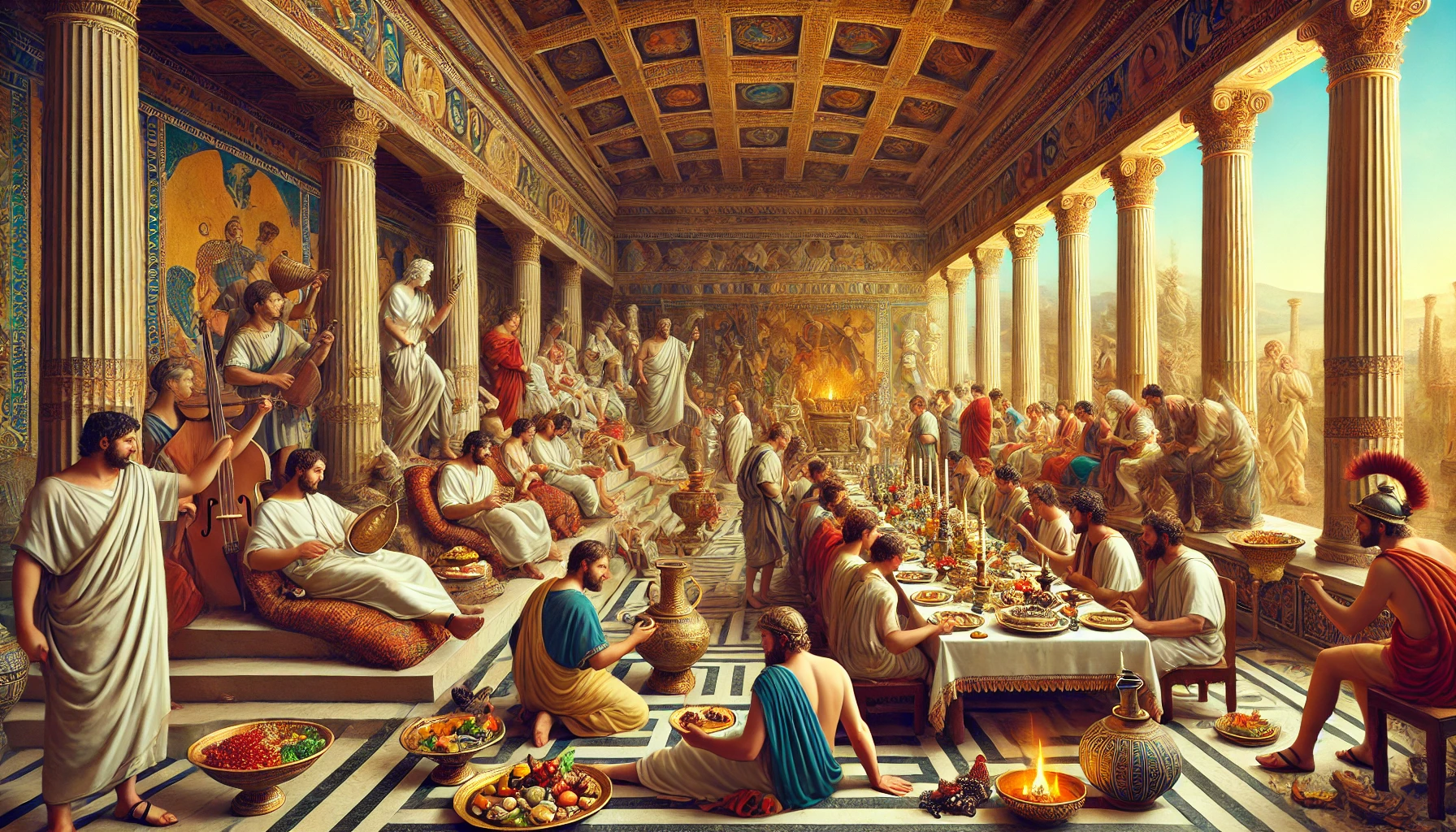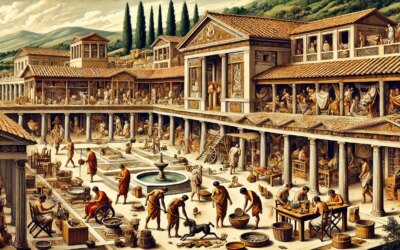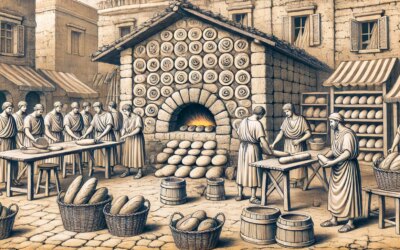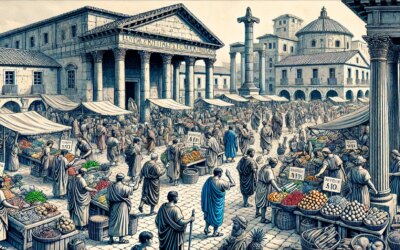A Taste of Luxury
In the heart of the Roman Empire, extravagant feasts were more than just meals—they were grand social spectacles. Hosted by the elite, these banquets showcased wealth, power, and culinary innovation. From roasted peacocks to honey-glazed dormice, Roman tables were laden with exotic delicacies and flowing wine, while entertainers ensured the night remained unforgettable.
The Setting: The Lavish Triclinium
Roman feasts were held in the triclinium, a lavishly decorated dining hall where guests reclined on couches, arranged in a U-shape around a central table. Frescoed walls, marble columns, and gilded oil lamps provided a luxurious ambiance, while servants rushed to replenish cups and serve delicacies. Only the elite enjoyed such settings, as common Romans dined in simpler accommodations.
The Menu: A Culinary Spectacle
A proper Roman feast consisted of multiple courses:
- Gustatio (Appetizers): Oysters, olives, eggs, and mulsum (honeyed wine) to stimulate the appetite.
- Prima Mensa (Main Course): Roasted meats such as suckling pig, exotic birds like flamingo, and seafood such as lobster and eel.
- Secunda Mensa (Dessert): Fruits, honey cakes, and nuts accompanied by spiced wines.
Entertainment: More Than Just Food
No Roman feast was complete without entertainment. Musicians played lyres and flutes, poets recited verses, and dancers performed for the guests. More extravagant banquets featured gladiator fights, exotic animal displays, or even mock naval battles in flooded dining halls.
Wine: The Lifeblood of Roman Feasts
Romans were passionate about wine, mixing it with honey, spices, or even seawater. Drinking straight wine was considered barbaric, so it was always diluted. The host decided the drinking pace, often leading to inebriated debates and philosophical discussions.
Symbol of Status and Excess
Roman feasts were more than indulgence—they reinforced social hierarchy. Invitations were prestigious, seating arrangements reflected status, and hosting a memorable banquet could elevate a politician’s career. However, excess also led to criticism, with moralists warning against Rome’s growing decadence.
A Legacy That Endures
While the Roman Empire has long faded, its feasting culture still influences modern dining traditions. From multi-course meals to fine wine appreciation, echoes of ancient Rome remain in our culinary experiences today. Dining like an emperor may be a thing of the past, but the allure of luxury and indulgence at the table is timeless.






